-
 Bitcoin
Bitcoin $119800
1.38% -
 Ethereum
Ethereum $3873
3.25% -
 XRP
XRP $3.247
1.85% -
 Tether USDt
Tether USDt $1.001
0.02% -
 BNB
BNB $840.4
5.94% -
 Solana
Solana $190.0
2.55% -
 USDC
USDC $1.000
0.03% -
 Dogecoin
Dogecoin $0.2433
2.69% -
 TRON
TRON $0.3197
-0.05% -
 Cardano
Cardano $0.8367
1.39% -
 Sui
Sui $4.327
3.11% -
 Hyperliquid
Hyperliquid $44.00
0.31% -
 Stellar
Stellar $0.4461
1.76% -
 Chainlink
Chainlink $19.25
4.61% -
 Hedera
Hedera $0.2941
3.90% -
 Bitcoin Cash
Bitcoin Cash $598.4
6.89% -
 Avalanche
Avalanche $26.19
4.67% -
 Litecoin
Litecoin $115.1
0.50% -
 Shiba Inu
Shiba Inu $0.00001427
1.55% -
 Toncoin
Toncoin $3.379
2.01% -
 UNUS SED LEO
UNUS SED LEO $8.966
-0.16% -
 Ethena USDe
Ethena USDe $1.001
0.02% -
 Uniswap
Uniswap $11.04
4.16% -
 Polkadot
Polkadot $4.239
2.00% -
 Monero
Monero $324.6
0.36% -
 Bitget Token
Bitget Token $4.672
2.46% -
 Pepe
Pepe $0.00001294
2.69% -
 Dai
Dai $0.0000
0.01% -
 Cronos
Cronos $0.1443
2.71% -
 Aave
Aave $302.9
1.98%
OKX contract trading process
Aspiring OKX contract traders can delve into this comprehensive guide to grasp the intricacies of contract trading, from account setup to trade execution, empowering them to navigate the crypto markets confidently.
Nov 14, 2024 at 10:32 am

OKX Contract Trading Process: A Comprehensive Guide
Introduction
Contract trading on OKX, a leading cryptocurrency exchange, is a powerful tool for experienced traders seeking to amplify returns or hedge risks. Unlike spot trading, contract trading involves speculating on the future price of an underlying asset, such as Bitcoin or Ethereum, using contracts with a predetermined expiration date.
This comprehensive guide will delve into the step-by-step process of contract trading on OKX, providing aspiring traders with a thorough understanding of each stage, from account setup to trade execution.
1. Account Setup
• Register on the OKX platform and complete KYC verification.
• Create a funding account and deposit funds using a variety of supported methods.
• Open a contract trading account.
2. Understanding Contract Types
• Perpetual Contracts: Indefinite contracts with no fixed expiration date.
• Quarterly Contracts: Contracts that expire on a quarterly basis, typically in March, June, September, and December.
• Delivery Contracts: Contracts that require the physical delivery of the underlying asset upon expiration.
• Options: Derivative contracts that grant the buyer the right but not the obligation to buy or sell the underlying asset at a specified price on a future date.
3. Choosing a Trading Strategy
• Determine your risk tolerance and trading objectives.
• Research market trends and historical data to identify potential trading opportunities.
• Define entry and exit points, stop-loss orders, and profit targets.
4. Funding Your Account
• Transfer funds from your OKX funding account to your contract trading account.
• Choose the margin mode: Cross or Isolated. Cross margin pools funds across all open positions, while Isolated margin isolates margins for each position.
5. Placing an Order
• On the OKX contract trading platform, select the desired underlying asset and contract type.
• Enter the contract size, leverage amount, and order type (limit, market, or stop).
• Review and confirm the order details before submission.
6. Managing Risk
• Implement proper risk management strategies, such as setting stop-loss orders to limit potential losses.
• Monitor open positions closely and adjust leverage accordingly to avoid excessive risk.
• Utilize hedging strategies, such as correlating positions in different assets, to mitigate overall risk.
7. Closing a Position
• When exiting a trade, create a reverse order to offset the original position.
• Close all open positions before contract expiration to avoid automatic settlement or delivery.
8. Withdrawal
• Transfer funds back to your OKX funding account for withdrawal.
• Complete the withdrawal process by following the exchange's instructions.
Disclaimer:info@kdj.com
The information provided is not trading advice. kdj.com does not assume any responsibility for any investments made based on the information provided in this article. Cryptocurrencies are highly volatile and it is highly recommended that you invest with caution after thorough research!
If you believe that the content used on this website infringes your copyright, please contact us immediately (info@kdj.com) and we will delete it promptly.
- Bitcoin's Potential Final Rally: Decoding Historical Data and Future Projections
- 2025-07-28 06:30:11
- BlockDAG, XRP, and Utility-Driven Growth: A New Era for Crypto?
- 2025-07-28 06:30:11
- Litecoin's ADX Crossover: Rally Potential or False Dawn?
- 2025-07-28 06:50:11
- Arctic Pablo Coin: Meme Coin Mania and Presale Buzz in 2025
- 2025-07-28 06:50:11
- Arctic Pablo: Meme Coin Mania or ROI Rocket?
- 2025-07-28 06:55:11
- Worldcoin's Wild Ride: Uptrend Battles Resistance Amidst Regulatory Waves
- 2025-07-28 07:00:12
Related knowledge
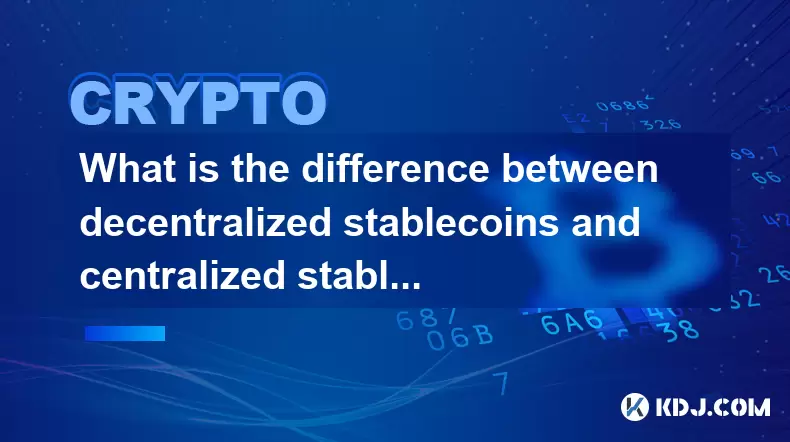
What is the difference between decentralized stablecoins and centralized stablecoins? Pros and cons comparison
Jun 15,2025 at 09:42am
What Are Stablecoins and Why Do They Matter?Stablecoins are a category of cryptocurrencies designed to maintain a stable value, usually pegged to an e...
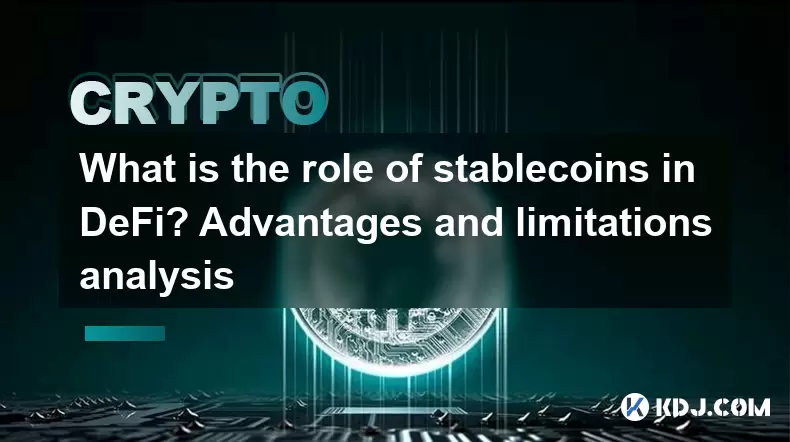
What is the role of stablecoins in DeFi? Advantages and limitations analysis
Jun 14,2025 at 06:28am
Understanding Stablecoins in the DeFi EcosystemStablecoins play a pivotal role in the decentralized finance (DeFi) landscape by providing a bridge bet...
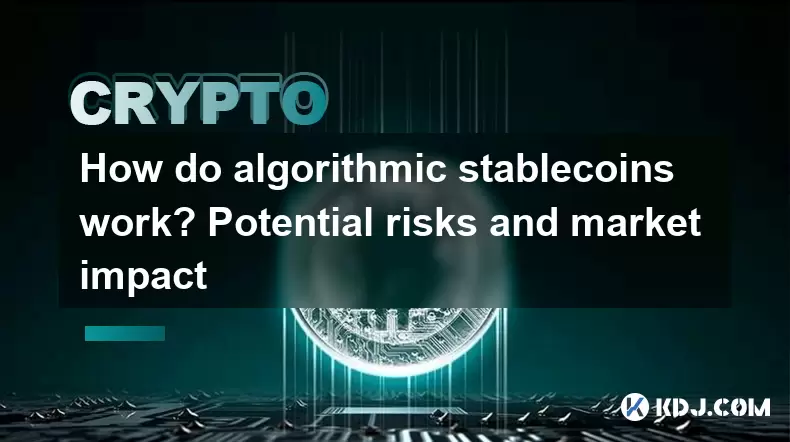
How do algorithmic stablecoins work? Potential risks and market impact
Jun 12,2025 at 02:07pm
Understanding Algorithmic StablecoinsAlgorithmic stablecoins are a type of cryptocurrency designed to maintain a stable value relative to a specific a...
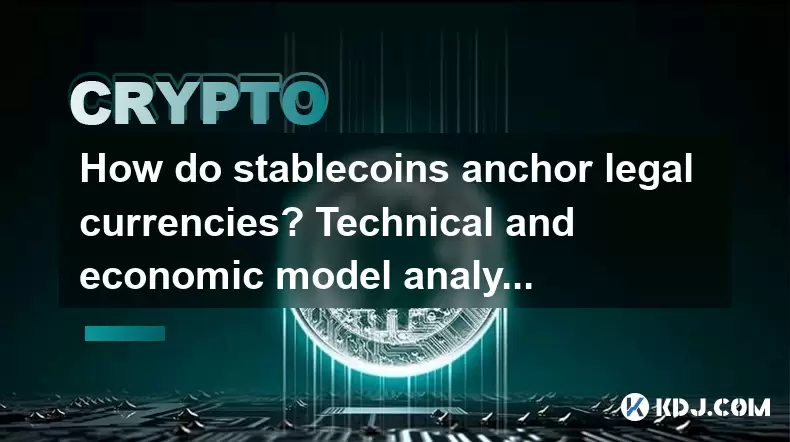
How do stablecoins anchor legal currencies? Technical and economic model analysis
Jun 16,2025 at 08:43am
Understanding the Concept of StablecoinsStablecoins are a category of cryptocurrencies designed to maintain a stable value relative to a specific asse...
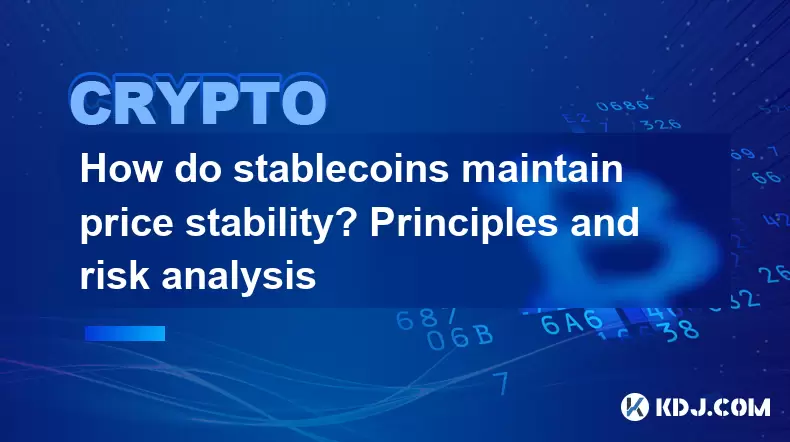
How do stablecoins maintain price stability? Principles and risk analysis
Jun 11,2025 at 12:01am
Understanding the Mechanisms Behind Stablecoin StabilityStablecoins are a category of cryptocurrencies designed to minimize price volatility, often pe...

What is the operating mechanism of stablecoins? In-depth exploration of its stability principle
Jun 10,2025 at 09:28pm
Understanding the Core Concept of StablecoinsStablecoins are a unique category within the cryptocurrency market, designed to address one of the most s...

What is the difference between decentralized stablecoins and centralized stablecoins? Pros and cons comparison
Jun 15,2025 at 09:42am
What Are Stablecoins and Why Do They Matter?Stablecoins are a category of cryptocurrencies designed to maintain a stable value, usually pegged to an e...

What is the role of stablecoins in DeFi? Advantages and limitations analysis
Jun 14,2025 at 06:28am
Understanding Stablecoins in the DeFi EcosystemStablecoins play a pivotal role in the decentralized finance (DeFi) landscape by providing a bridge bet...

How do algorithmic stablecoins work? Potential risks and market impact
Jun 12,2025 at 02:07pm
Understanding Algorithmic StablecoinsAlgorithmic stablecoins are a type of cryptocurrency designed to maintain a stable value relative to a specific a...

How do stablecoins anchor legal currencies? Technical and economic model analysis
Jun 16,2025 at 08:43am
Understanding the Concept of StablecoinsStablecoins are a category of cryptocurrencies designed to maintain a stable value relative to a specific asse...

How do stablecoins maintain price stability? Principles and risk analysis
Jun 11,2025 at 12:01am
Understanding the Mechanisms Behind Stablecoin StabilityStablecoins are a category of cryptocurrencies designed to minimize price volatility, often pe...

What is the operating mechanism of stablecoins? In-depth exploration of its stability principle
Jun 10,2025 at 09:28pm
Understanding the Core Concept of StablecoinsStablecoins are a unique category within the cryptocurrency market, designed to address one of the most s...
See all articles

























































































